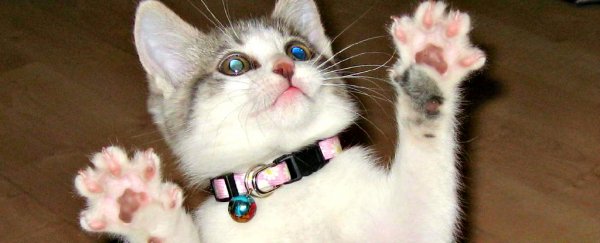New research suggests that your cat might actually have a handle on some very basic physics, and can use it to help them hunt down hidden prey.
If the thought of your cat being better than you at physics - as well as being allowed to sleep all day - is getting you down, don't worry, because we're talking very simple cause-and-effect concepts here, and they only work when paired with cats' extraordinary hearing and eyesight.
The research, led by scientists from Kyoto University in Japan, was following on from an earlier study that showed cats could predict whether or not an opaque container would have an object inside, based on whether it rattled or not.
That's pretty smart, but the cats could have just been conditioned to expect objects when they heard a rattle, kind of like Pavlov's dog. So the team wanted to see whether the cats actually had a basic understanding of cause and effect.
To figure this out, they took 30 domestic cats and shook a container in front of them - sometimes the shaking was silent and sometimes it rattled. They then turned the container over to show the cat if something was hidden inside. To keep them off guard, half the time their experiment followed the laws of physics, and half the time it didn't.
In other words, 50 percent of the time, the container rattled and contained an object, just like you'd expect. But the other 50 percent of the time the container was silent but contained an object, or vice versa.
That meant that the cats couldn't be trained to associate the rattle with the presence of an object, so if the kitties spent more time inspecting the rattling containers - a sign that they were expecting an object to be inside them - they must be figuring out by themselves that a rattle = contents. And that right there is an indication that they grasp of some very basic physical laws.
The study also showed that the cats spent more time checking out containers that rattled, which suggests that they had some kind of grasp on the idea of cause and effect.
"Cats use a causal-logical understanding of noise or sounds to predict the appearance of invisible objects," said lead researcher Saho Takagi.
What does all that have to do with hunting? The researchers hypothesise that this ability, paired with super-sharp hearing and vision, allows cats to seek out hidden prey.
Of course, this is a very preliminary study involving only a small sample size, so it's way too soon to say anything for sure about what cats can and can't comprehend.
But it's an interesting indication of what they might be capable of, and Takagi explains that further research is needed to figure out whether cats can also deduce information about the quantity and size of hidden objects based on what they sound like.
The research has been published in Animal Cognition.
